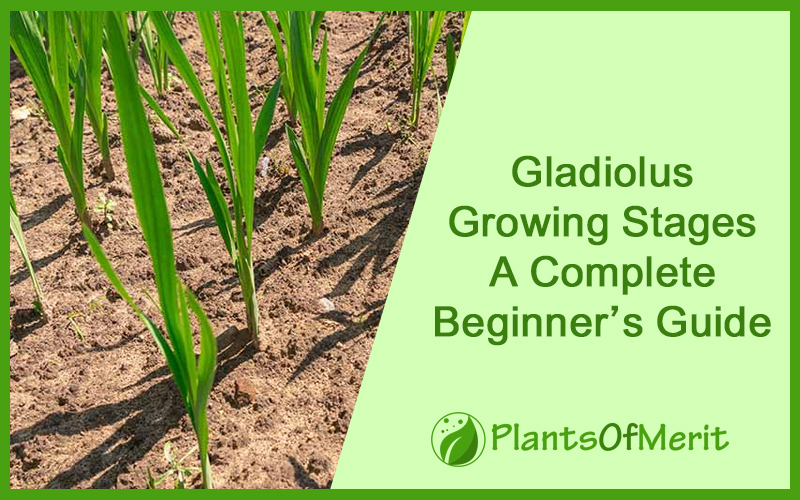Unless you are a professional gardener or have a lot of ideas about gardening, not knowing about Gladiolus is pretty common. This perennial plant grows from corms and is responsible for producing attractive and colorful flowers.
But, the best part of this plant is the stunning 3-feet long flowers that grow on the plant. They are vibrant, unique, and one-of-a-kind, which means that you won’t regret growing this plant, provided that it takes a lot of time and effort.
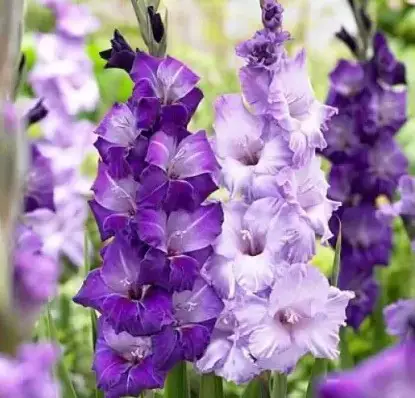
Not just for flower gardens, Gliadiolus looks stunning during the summer month, especially with the flower blooming during that period. Following the right growing and maintenance routine ensures that the plant grows optimally through every growing stage without any limitations.
This article will walk you through each of the Gladiolus growing stages and how you can make the most out of each harvest.
What is Gladiolus?
Despite its majestic and stunning appearance, Gladiolus isn’t the most mainstream flowering plant. Not every gardener is aware of it, and if you are a beginner, chances are that you wouldn’t know of the same as well.
As we mentioned before, Gladiolus is a classic perennial plant that’s known for its tall flower spikes and vibrant and bright colorful flowers.
The flowers grow in a variety of colors, including white, yellow, pink, lavender, burgundy, rose, etc. So, depending on which variant you buy and plant, Gladiolus will grow into a beautiful and tall flowering plant during the peak summer months.
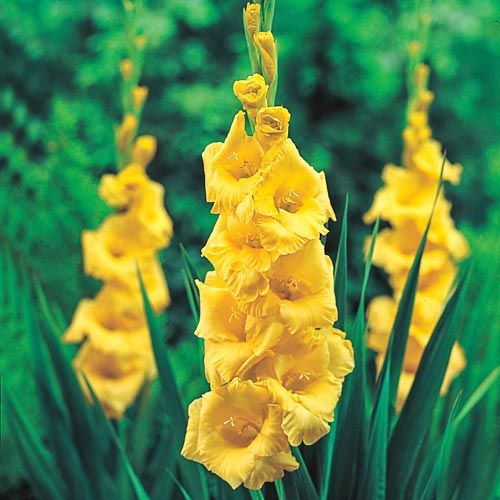
This is also a cut flower that grows up to 5 feet in length during the summer months. So, it isn’t even a question of why this plant is considered a staple in larger and more expansive gardens. Despite the challenges that you might face growing this plant, it is fairly easy to take care of and maintain.
The only factor you need to be aware of is the frost. Gladiolus doesn’t do well in the frost and inadequate moisture levels in the soil will end up affecting the flowering as well.
What are the Growing Stages of Gladiolus?
Now that you have a basic understanding of Gladiolus and what you can expect from this plant, let us shift our focus to the growing stages.
There are eight stages in total, meaning that you need to master each step along the way to better plan the cultivation and the blooming of the plant.
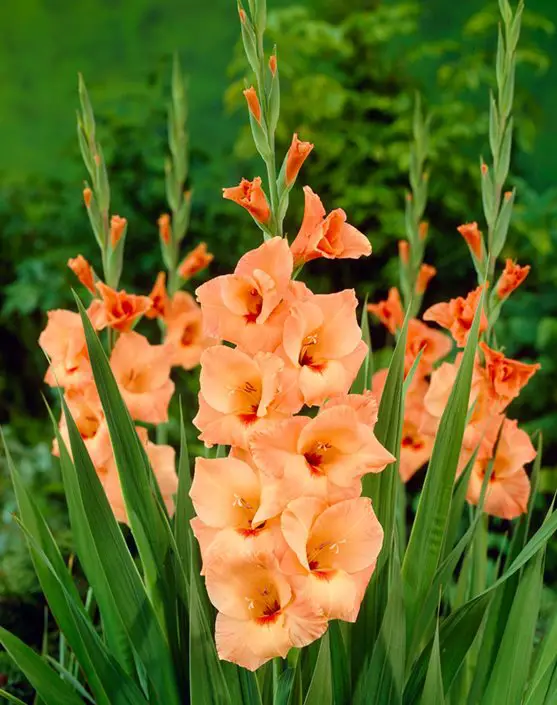
When growing gladiolus, the one thing you have to practice is being patient. It is quintessential and not something you can trade. The plant takes around 8 months in total to flower, which indicates that you have to indulge in the prolonged waiting game.
Let us explore each of these stages in detail:
Stage 1 – Rooting
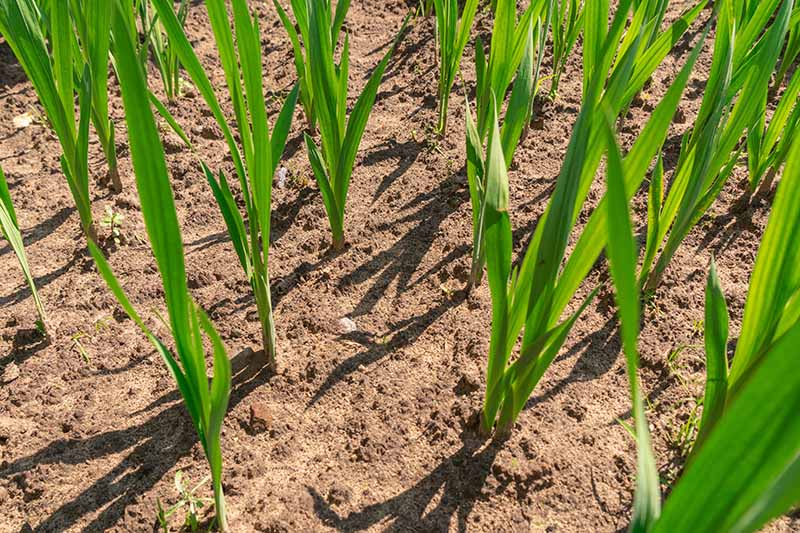
The first stage is where everything starts. The rooting system in a plant makes all the difference. It has the potential to either ensure the plant survives or end up taking the entire plant down, putting a damper on your hard work.
One of the primary reasons why you need to pay extra attention to the rooting system is the stability and quality of the roots. The last thing you want is to have a poor rooting system that affects the growth of the plant. A strong rooting system also keeps the moisture levels in check.
Since Gladiolus takes a long time to bloom, focusing on the plant’s rooting system is crucial. You want to give it enough time so that the roots grow strong enough to retain moisture throughout growth. For optimal root development, you need to pay close attention to the temperature too.
Furthermore, during the rooting stage, you need to be extra careful about sunlight exposure. You don’t want things to go excessively out of hand. Gladiolus requires partial shade along with optimal air circulation, so keep that in check.
If you are wondering about the duration, rooting takes a few weeks, so you need to be patient and wait until the roots have stabilized and matured enough to then move to the next stage of growth.
Stage 2 – Heading

As we just discussed, Gladiolus doesn’t do well under direct sunlight. You need to keep it in partial shade where it received bright but indirect sunlight exposure to support its growth.
The second stage of growth is alternatively termed the foliage production stage, so keep that into consideration as well. You want to do everything need to ensure that the flowers and foliage grow and develop optimally.
What’s disappointing is the time it takes. During this period, the growth of foliage can take up a few months, so that’s something you have to be ready for. If the plant gets excess sunlight exposure, it might promote the growth of the leaves but will arrest any chances of blooming.
If you want foliage and flower heads to be strong and of high quality, fertilization is quintessential throughout this stage as well. But, always keep a check on the amount of fertilizer you are using. The last thing you want is to use excess fertilizer and end up destroying the plant altogether.
Stage 3 – Flowering
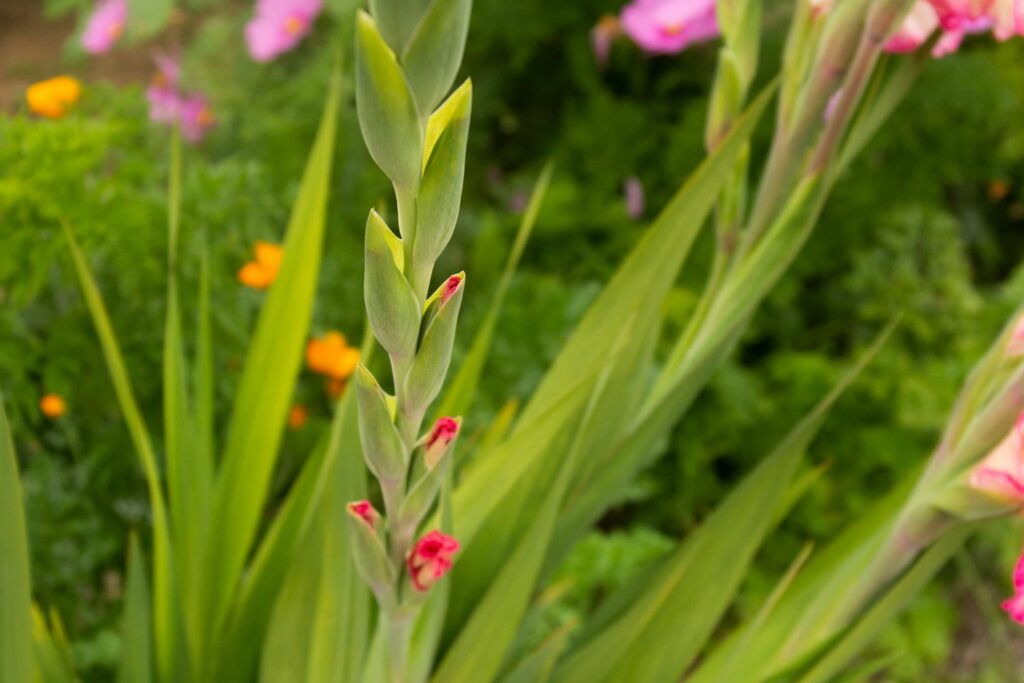
This is possibly the most significant stage in the growth of Gladiolus. Unlike heading, which can take quite a few months, flowering takes somewhere between 4-8 weeks, depending on the flower head.
Unlike the previous two stages where you needed partial sunlight, the flowering stage is the opposite and requires full sunlight exposure without any questions. Full sun exposure is quintessential to support the flowering process.
Optimal sunlight also keeps a check on the moisture levels and the fertilizer uptake from the soil. Since flowering is quite a delicate stage in the whole process, you need to put in extra effort during this particular stage.
Once the flower heads start shooting out, that’s when you might have to up your watering and fertilizer application. You also need to regulate the temperature to around 70 degrees Fahrenheit for optimal growth.
During the flowering stage, if you notice the growth of small leaves and buds from the stem, that’s a sign that you need to put a stop to fertilization. Over-fertilization can damage the rooting system and lead to a lot of complications, which you need to avoid at all costs.
Stage 4 – Stretch

With the first three stages focused on proliferation, the next stage is flower development. Now that the initial stages are over, the next step in the process is stretching where the flowering begins.
This first stage in flower development typically takes around two weeks to three months, depending on the conditions in the environment. Your work is quite crucial during this period. You don’t want to overstretch or under-stretch as well. The right amount ensures that the flower stem grows as it should.
Lack of enough stretching will lead the flowers to turn into seeds, which isn’t favorable at all. Additionally, this period also requires lots of watering, so keep that in mind. But, you don’t want to overdo things because overwatering can lead to fungal rots in the rooting system of the plant.
Another important factor to keep in mind during this stage is to avoid fertilization. You don’t need any more during this period as it hinders flowering.
Stage 5 – Bud Formation
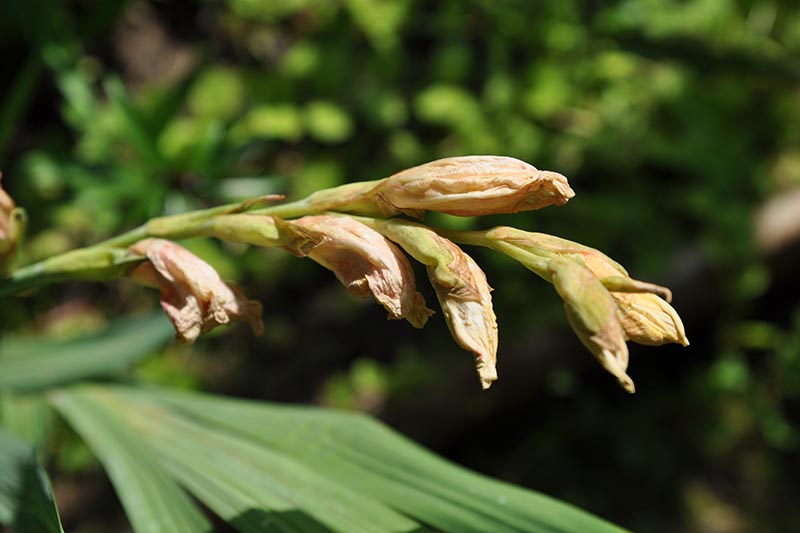
Next up on the growth and development is bud formation. Compared to all the other stages, this one takes the least amount of time and maintenance.
With the flower development starting, you will soon start to notice the flower heads popping out of the designated spots on the plant. But, as you notice the flower heads, the next step is to encourage the formation of those buds into flowers.
This requires the plant to be in a cool and breezy area. You don’t want the plant to be exposed to direct sunlight at all, so keep that in check as well. Overdoing anything during this phase will lead to damage to the plant, which means that you have to take away as many triggers as possible. This includes eliminating direct sunlight, excess fertilization, etc.
Reducing these out of the picture will eventually eliminate the stress off the plant, ensuring optimal growth.
Stage 6 – Flower Development
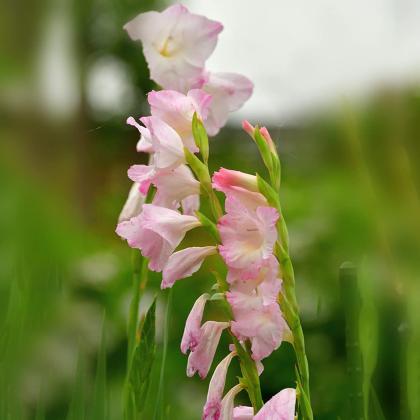
We have come to the most anticipated stages of the Gladiolus plant’s growth. With the bud formation done and out of the way, the next thing you have to focus on is flower development.
You should be able to witness stunning flowers on your plant, indicating that your hard work has finally paid off. To ensure that the plant produces more flowers from the bud, you need to grow it somewhere with less sunlight and in a cool place.
The process of flower development can take somewhere around 2-3 weeks, depending on the environmental parameters.
Also, during this period is when fungal infections start to creep up. So, if you notice the edges of the flowers turning brown, it could be a sign of damage or infection. Immediately spray the plant with an organic fungicide to eliminate those risks. Not treating this issue will take down the quality of the plant altogether.
Furthermore, if you notice excessive growth of stalks on the flower heads, it could weigh down on the plant and prevent further flowering. So, look for signs if the plant needs staking. If yes, grab some prunes and get to work.
Stage 7 – Deheading
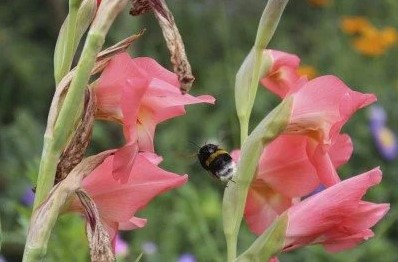
Once your flowers have bloomed and you have taken them off the plant, the next step is beheading. In this, you have to find all the spent blooms and get rid of them until new blooms appear.
Doing this is a crucial part of the plant’s growth and something you can’t miss out on at all. What we’d recommend you do is cut off all the unnecessary parts in the plant and the flower to allow newer flowers to bloom and grow.
Deheading also supports the plant’s rejuvenation, so that’s another thing you have to keep in consideration. If you are wondering how you’d recognize when the time is right, we’d say you wait until the flowers start browning around the edges.
Also, try to dehead the younger blooms instead of the mature ones. Don’t do them all together because that will stop the plant from flowering altogether. Encourage the photosynthesis process as well by preventing unnecessary fertilization and watering.
Stage 8 – Rejuvenation
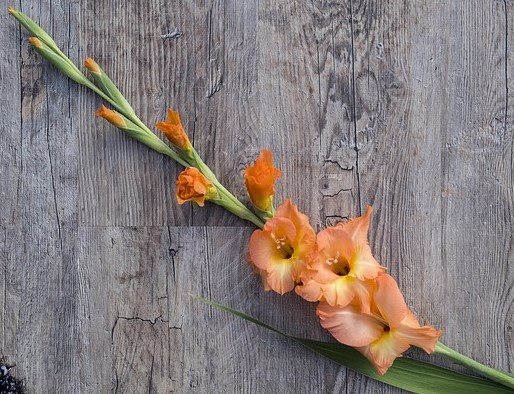
The last and possibly the most important step in the Gladiolus growing stage is Rejuvenation. By this stage, the plant is done producing flowers for the season.
Your work in this stage is to clean everything up and that includes the dried or brown blooms that are on the plant. Doing this little clean-up also eliminates the unwanted pests from the flowers, preparing them for the next season.
However, you don’t want to be too aggressive during this process. Avoid cutting and eliminating too much foliage because that’s going to end up causing issues with the growth. During each rejuvenation scraping, plan things out and only cut off the necessary amount and leave the rest.
And, that concludes all the eight major stages of growth that a Gladiolus plant goes through in one flowering cycle. It is no doubt a very lengthy process and requires a lot of upkeep, but it is definitely worth all the hassle. Given how stunning the long-stemmed flower looks, we’d recommend you follow each stage as mentioned to get the desired outcome from the growing process.
Conclusion
Growing Gladiolus is quite a lot of work. The most crucial factor in growing this plant is the time it takes. You are bound to feel tied up for the next 8-9 months, paying attention to the environmental factors and the growth. So, if you are a beginner and don’t want to jinx things, we hope this article gives you all the insights you need to sort out growing the Gladiolus plant without any questions.

